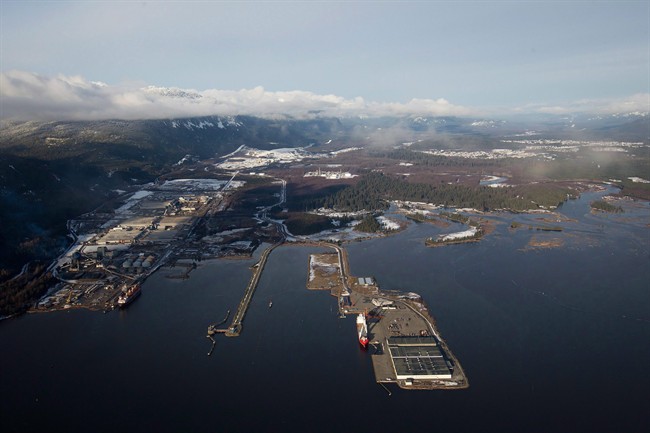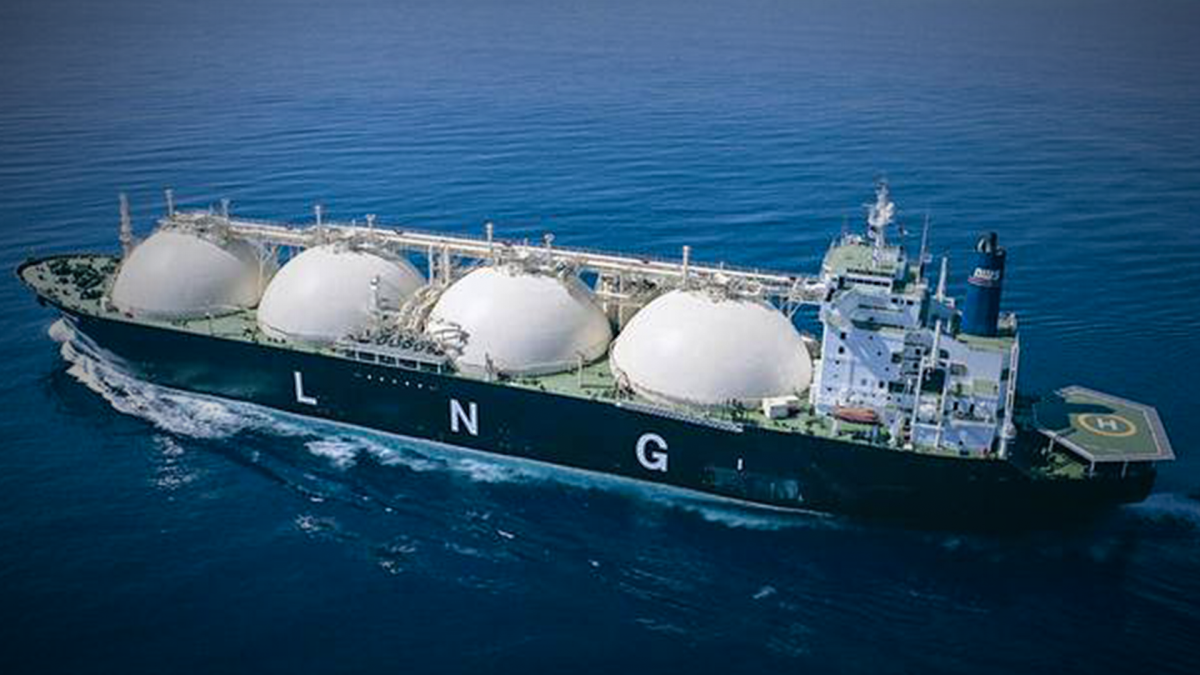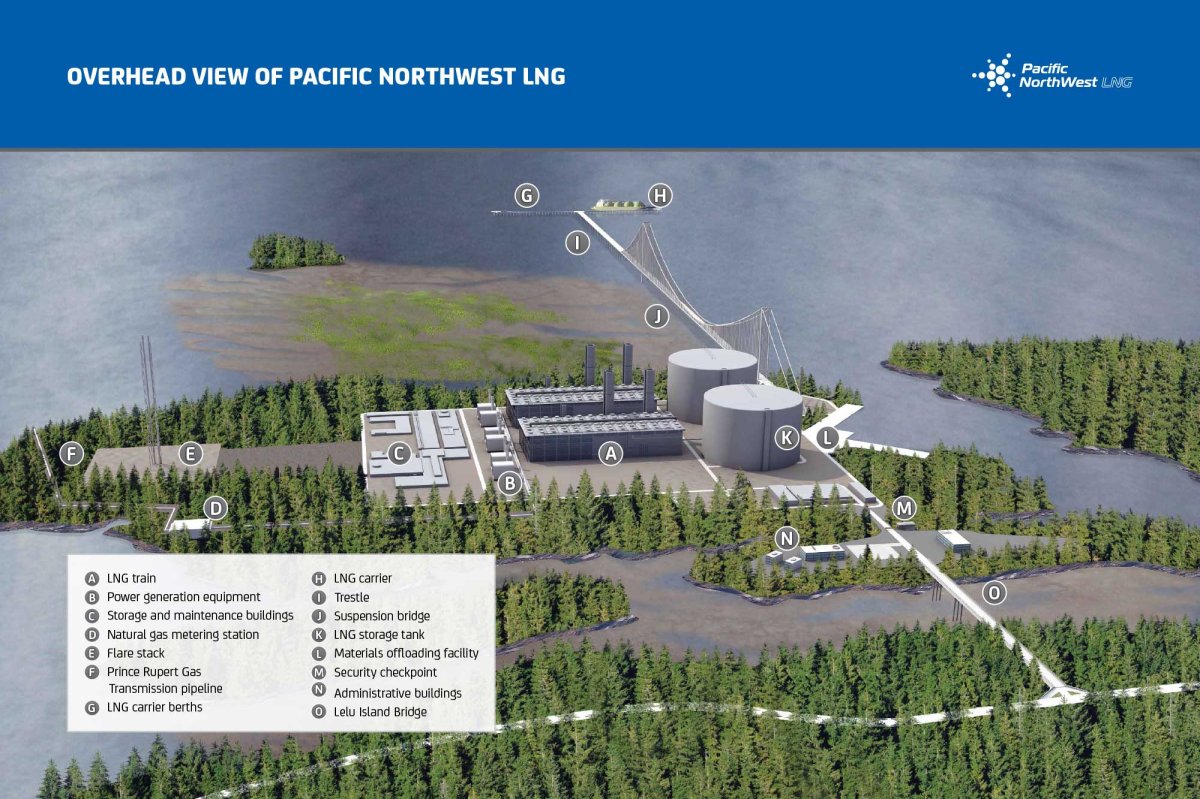In his office, Minister of Natural Gas Development Rich Coleman compares building the Liquefied Natural Gas industry in British Columbia to the path Vancouver took getting the Winter Olympics.

“It took a number of years to get it, a number of years to build it…it was well over a decade and a half in process,” he says, talking about the length of time it takes for province-defining projects to come to fruition.
“We’ve been at this three years, and we’re at the threshold for a final investment decisions for at least one or two companies, in the next 10-12 months. If just those two projects went ahead, we’d be talking well over $50 billion in capital investment in our country, which would be the largest investment in Canadian history. I don’t think we’re going slow at all…I’m pretty pleased with the progress to be honest.”
But while the last three years have been marked by bold promises by the provincial government, framework agreements, and behind the scenes negotiations with multinational companies and First Nations groups, the next 12 months will go a long way in determining the LNG legacy for this government.
Here’s a quick rundown of where the LNG industry is at in British Columbia.
What is the government promising?
While LNG was first seriously discussed by the government in 2012, it was in the 2013 throne speech where the gauntlet was laid down: a new Prosperity Fund, which would gain $100 billion and $260 billion over 30 years from LNG royalties and business taxes. The government said it would be enough to wipe out the province’s current debt of $56 billion and eliminate the need for a provincial sales tax.
- High-profile B.C. sex offender Randall Hopley pleads guilty to 3 charges
- White Rock fatal stabbing suspect and victim may have been in physical altercation: IHIT
- BC Hydro offers free AC units to lower-income, vulnerable customers
- ‘It’s nice to be the villain’: Vancouver Canucks gear up for Game 3 in Nashville
Today, Coleman says a $100 billion fund is still possible, and the government remains committed to its goal of at least three LNG plants up and running by 2020.
“They may not all be the bigger-sized plants, because they take longer to build, but there’s certainly 3-5 smaller ones that will be up and running by 2020, and there’s also a couple larger ones that could reach 2020 as well,” he says.
Is that likely?

According to most industry analysts, it’s not. The general consensus is that low energy prices, LNG plants already in operation in Australia, and increased competition from America make the chances of more than one plant in operation by 2020 unlikely.
“It’s unlikely in my view that most of the LNG projects that are currently proposed will get built,” said Alan Ross, a lawyer with Borden Ladner Gervais in Calgary who has worked on behalf of LNG clients, in April.
“There’s an awful lot of proposed LNG projects and simply not enough need for all of them.”
READ MORE: Moody’s puts a damper on B.C.’s LNG dreams
Neil Beveridge, an analyst with Sanford C. Bernstein & Co., issued a report in January that said while three major projects are possible, none would be built until after 2020 because of the current climate.
Indeed, while the government lists 19 proposed LNG projects on their dedicated website, none of them have reached a final investment decision, half have yet to receive government approval, and several have stalled. To name just one example, Quicksilver Resources Inc., which proposed an LNG operation in Campbell River called Discovery LNG, declared bankruptcy in March.
In addition, a new report by the Canadian Centre for Policy Alternatives claims that B.C. has much less natural gas than government claims.
What is the government’s response?
Coleman says those reports are flawed for two main reasons. First, he says it discounts several smaller plants that he believes will be up by 2020. Second, he says that in negotiations “with a lot of moving parts,” big companies will remain coy with their public intentions until a final announcement is made.
“Shell has always been first quarter of 2016, that’s always been their timeline, they’re a very methodical company, and they’re moving down that timeline still very confident,” says Coleman, referring to the LNG Canada proposal led by Shell in Kitimat.
“ExxonMobil is a company that goes and does the work and then makes announcements when they’re done, versus engages at the same level as Petronas or Nexen,” he added, referring to the WCC LNG Ltd. project near Prince Rupert being led by ExxonMobil and Imperial Oil.
“Each one is a bit different.”
Which LNG projects are the most likely to go ahead?
The government has publicly championed the Pacific NorthWest LNG project led by Petronas, which could lead to a plant at Lelu Island near Prince Rupert. It’s potentially a $36 billion investment, but still needs approval of the Lax Kw’alaams Band, which rejected a $1.15 billion offer earlier this month.
WATCH: What hurdles remain in Petronas LNG agreement?
Beveridge’s report in January suggested that two Kitimat facilities – the LNG Canada project led by Shell, and the Kitimat LNG led by Chevron, could come into production between 2020 and 2025.
As for smaller projects? Analysts say the Douglas Channel LNG proposal led by AltaGas Ltd, and the Woodbifre LNG proposal in Squamish could be fully approved by the end of this year – although the Mayor of Squamish and city council have said they won’t support the project unless certain conditions are met.
What does the NDP say?
NDP energy critic Bruce Ralston says they support the LNG industry, but it comes with four conditions: approval of First Nations groups, meeting high environmental standards, providing a fair return to the treasury and taxpayers, and the availability of jobs and training opportunities for British Columbians.
Ralston says there are several concerns with how the government has moved on the LNG in the last two years, and that the recent agreement signed with Petronas gives too many concessions to the company.
“They’re locked in royalties for 23 years, which is potentially dangerous course to adopt, given that it’s very difficult to predict what market prices will be 6 months from now, let alone 23 years from now,” says Ralston.
The Liberals say the NDP’s support is disingenuous.
“I don’t think the NDP supports LNG, period,” says Coleman.
“I don’t think they support economic development through resource management. I think they spend their time going ‘how can we not say we’re opposed to this, but still criticize things?'”
“I hope they invite me to a dinner where they all have to eat their words.”
What will happen in the next year?
The government has said they hope to reach a Final Investment Decision with Petronas in June. If that happens, they will bring back the legislature this summer to approve the deal, work on securing an agreement with the Lax Kw’alaams, and wait for a recommendation from the Canadian Environmental Assessment Agency, expected in October.
As for the other 18 projects? There are still many National Energy Board and BC Environmental Assessment approvals to go, and investment decisions by companies that have, to date, not publicly committed to a final decision in the same way Petronas has.
Coleman says that any large plant would take four years to build, meaning final decisions for some of the projects would have to be made in the next year for the government’s promises to become reality. But he still expresses confidence—both in a positive outcome, and the decision to make LNG a centerpiece of his government’s ultimate legacy.
“What do you expect of the people who lead your province? To put their head in the sand, or think of something that’s generational, that can change opportunities for First Nations and non-First Nations alike, provide jobs and opportunities, and a strong future for your children and grandchildren,” he says.
“If I wasn’t sent here to do that, then what the hell am I doing?”





Comments